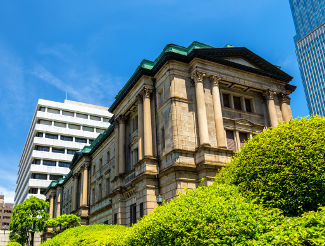When central banks first began to engage in quantitative easing (QE) policies during the financial crisis, those policies were harshly criticized by sound economists. The idea that printing money out of thin air to purchase worthless assets could somehow strengthen the economy and bring it back from the brink of destruction was an absurd one. All it could do was delay the inevitable day of reckoning, which as we see is just about to occur now that the stock market bubble is showing signs of a coming collapse.
The one question that many people had, however, was just how far central banks could go with QE? How many assets could central banks buy before QE became ineffective or downright destructive? After all, if the Soviet Union could survive for 69 years with an economic system that was bound to fail, couldn’t central banks conceivably keep going for decades too?
We’re starting to see that answer somewhat by looking at the Bank of Japan, whose monetary policies have been a precursor of much of what the Federal Reserve did during the financial crisis. The BOJ has basically been involved in non-stop QE for decades, to no avail. The wildfire growth of the 1980s is long behind them and won’t be returning as long as the BOJ is around.
Yet despite the failure of QE in the 1990s, the BOJ returned to those same failed policies after the financial crisis. And unlike most other central banks, it didn’t limit its purchases just to bonds. It purchased stocks of Japanese companies too, accumulating a vast sum of assets. In fact, the BOJ now holds assets equivalent to about 100% of Japanese GDP. And what does the BOJ have to show for it?
Nothing aside from continuing mediocre economic performance and a burgeoning balance sheet. The BOJ hasn’t even been able to stimulate price inflation at the levels it wants to, because it is fighting natural deflationary pressures from continued production, falling wages, and falling housing prices. In short, the BOJ’s policies have been a complete failure from the outset, doing nothing aside from padding the BOJ’s balance sheet.
That should be a warning to other central banks not to follow in the BOJ’s footsteps. If assets at 100% of GDP results in failure, then other central banks have no business trying to follow along. The Fed, to its credit, is at least trying to draw down its balance sheet, although it likely won’t go as far as it should. But with so much financial market performance being dependent on central banks purchasing assets, the fact that that asset buying will be coming to an end will mean that the prices of stocks and bonds will no longer be propped up by central banks.
Expect a long bear market in stocks and bonds in the future, and a severe hit to your retirement accounts. Now is the time to start investing in gold, taking advantage of products such as gold IRAs to safeguard your retirement assets and protect them from the inevitable stock market crash that is coming. No one wants to see 50% or greater losses like they did during the last financial crisis, which is why it’s so important to act now before markets start to decline.
This article was originally posted on Goldco.



